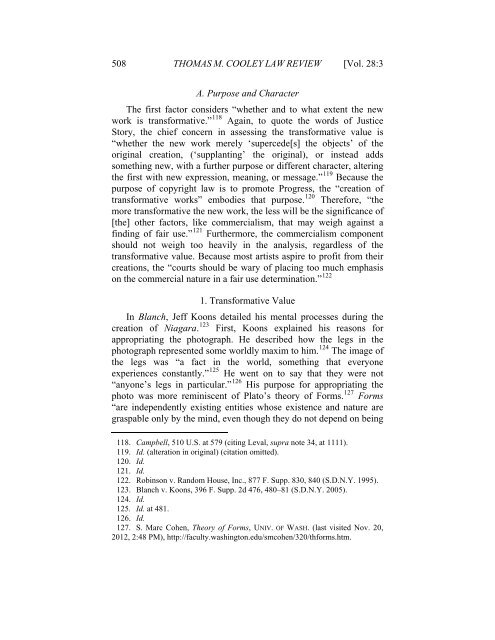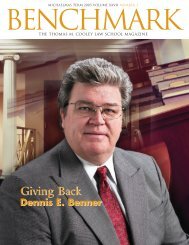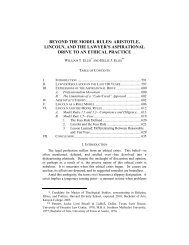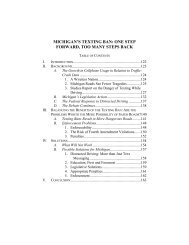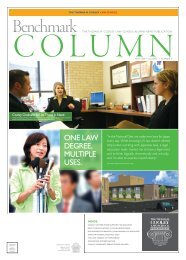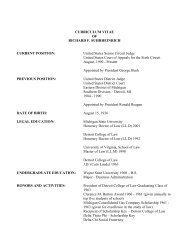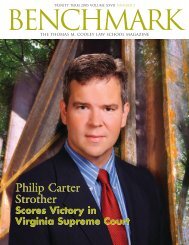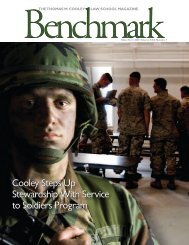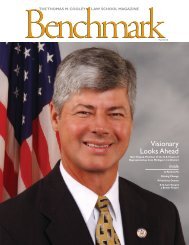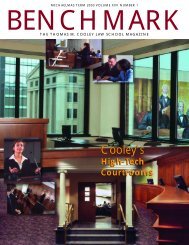Blanch It, Mix It, Mash It - Thomas M. Cooley Law School
Blanch It, Mix It, Mash It - Thomas M. Cooley Law School
Blanch It, Mix It, Mash It - Thomas M. Cooley Law School
Create successful ePaper yourself
Turn your PDF publications into a flip-book with our unique Google optimized e-Paper software.
508 THOMAS M. COOLEY LAW REVIEW [Vol. 28:3<br />
A. Purpose and Character<br />
The first factor considers “whether and to what extent the new<br />
work is transformative.” 118 Again, to quote the words of Justice<br />
Story, the chief concern in assessing the transformative value is<br />
“whether the new work merely ‘supercede[s] the objects’ of the<br />
original creation, (‘supplanting’ the original), or instead adds<br />
something new, with a further purpose or different character, altering<br />
the first with new expression, meaning, or message.” 119 Because the<br />
purpose of copyright law is to promote Progress, the “creation of<br />
transformative works” embodies that purpose. 120 Therefore, “the<br />
more transformative the new work, the less will be the significance of<br />
[the] other factors, like commercialism, that may weigh against a<br />
finding of fair use.” 121 Furthermore, the commercialism component<br />
should not weigh too heavily in the analysis, regardless of the<br />
transformative value. Because most artists aspire to profit from their<br />
creations, the “courts should be wary of placing too much emphasis<br />
on the commercial nature in a fair use determination.” 122<br />
1. Transformative Value<br />
In <strong>Blanch</strong>, Jeff Koons detailed his mental processes during the<br />
creation of Niagara. 123 First, Koons explained his reasons for<br />
appropriating the photograph. He described how the legs in the<br />
photograph represented some worldly maxim to him. 124 The image of<br />
the legs was “a fact in the world, something that everyone<br />
experiences constantly.” 125 He went on to say that they were not<br />
“anyone’s legs in particular.” 126 His purpose for appropriating the<br />
photo was more reminiscent of Plato’s theory of Forms. 127 Forms<br />
“are independently existing entities whose existence and nature are<br />
graspable only by the mind, even though they do not depend on being<br />
118. Campbell, 510 U.S. at 579 (citing Leval, supra note 34, at 1111).<br />
119. Id. (alteration in original) (citation omitted).<br />
120. Id.<br />
121. Id.<br />
122. Robinson v. Random House, Inc., 877 F. Supp. 830, 840 (S.D.N.Y. 1995).<br />
123. <strong>Blanch</strong> v. Koons, 396 F. Supp. 2d 476, 480–81 (S.D.N.Y. 2005).<br />
124. Id.<br />
125. Id. at 481.<br />
126. Id.<br />
127. S. Marc Cohen, Theory of Forms, UNIV. OF WASH. (last visited Nov. 20,<br />
2012, 2:48 PM), http://faculty.washington.edu/smcohen/320/thforms.htm.


